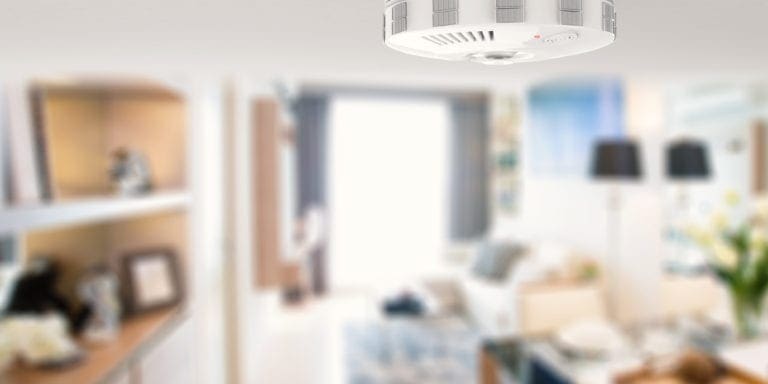If your carbon monoxide alarm goes off, it is important to take immediate action. This toxic gas can cause serious health problems and even death. In this article, we’ll discuss the steps to take if your carbon monoxide alarm sounds.
What is a Carbon Monoxide Detector?
Using a carbon monoxide detector is a great way of sparing yourself and your family from the risk of carbon monoxide (CO) poisoning. CO is an odorless and colorless gas that can cause numerous symptoms such as nausea, dizziness, weakness, and vomiting, among others. If the concentrations are high enough, it can also lead to loss of consciousness, arrhythmias, seizures, and even death.
It’s important to know that even low concentrations of CO in the air (20 to 30 parts per million – PPM) can lead to carbon monoxide poisoning over several hours. A much higher density, such as 1,000 PPM can result in loss of consciousness in around one hour. And since the gas is odorless, people can become poisoned without even knowing it. An alarm system that can detect CO buildup in the air will alert residents about the risk, in which case they need to do a series of immediate actions.
But before we can go into those details, we need to mention the different alarms that your carbon monoxide emits. You need to familiarize yourself with the user’s manual so that you can interpret each sound. Some models – which we highly recommend – will also alert you when it’s time to change the batteries if there are some internal issues or other malfunctions with the detector. More useful are digital display devices as they provide additional information about the problems.
What To Do When Your Carbon Monoxide Alarm Goes Off
#1 – Check the CO Detector and Evacuate the Building
If you hear the carbon monoxide detector going off, you should never ignore it. If it has a digital display, you should see what it says – whether it’s a maintenance issue or an emergency. Some devices also show the concentration of CO in the air at any given time.
The American Society of Heating, Refrigerating, and Air-Conditioning Engineers (ASHRAE) recommends a maximum of 9 PPM in a living area at any given time. In a working area, the Occupational Safety and Health Administration (OSHA) allows a maximum of 35 PPM in an 8-hour period. A 400 PPM can cause severe symptoms in a couple of hours and can be life-threatening in three. Any concentration of 1,600 or above can result in death in less than an hour. A loss of consciousness happens before that.
Depending on the severity of the carbon monoxide buildup, you should vacate the building as fast as possible – even if nobody is exhibiting any apparent symptoms of carbon monoxide poisoning. These symptoms are often associated or misinterpreted as being flu-like (headaches, dizziness, nausea, weakness, etc.).
#2 – Call 911
Once you are safely outside, you need to call the proper authorities. Make sure that everyone has made it to fresh air.
#3 – Identify Source of the Problem
If you experience this type of emergency, it’s crucial to locate the source of the problem. The fire department may be able to tell you or you may need to get in touch with a specialist. When there is such a carbon monoxide leak, the usual culprit is malfunctioning or damaged appliances such as your stove, HVAC system, boiler, or generator.
Conclusion
Noise from your carbon monoxide detector should never be ignored. A chirping sound is likely a request for new batteries. If the alarm is going off, make sure that everyone in the home immediately evacuates the building. Once safely outside, call the authorities so that they can evaluate your home and identify the cause of the leak.
If you have any questions regarding the safety of your home, give us a call at 301-663-0300. We’re happy to help you.


There are no comments yet.